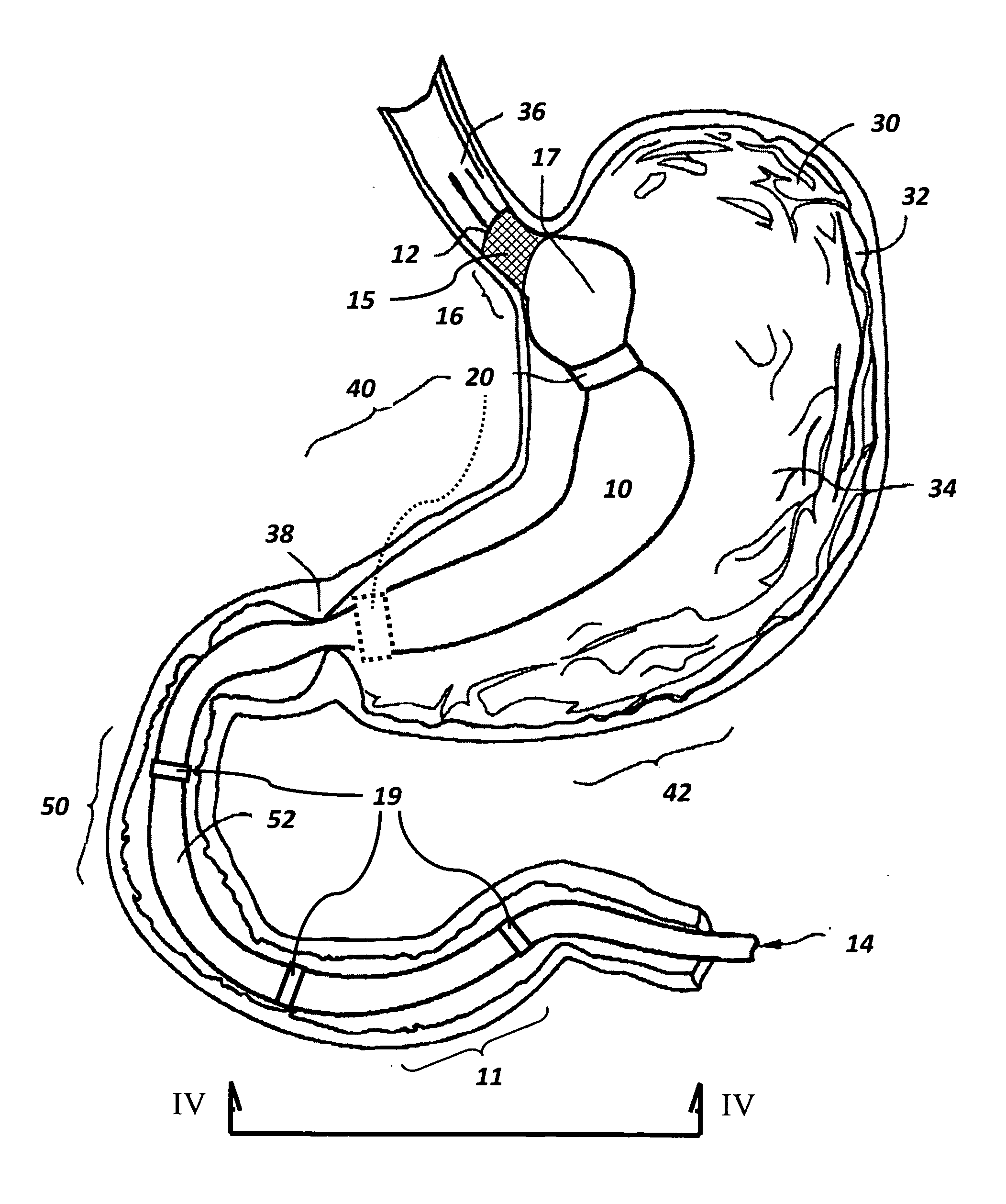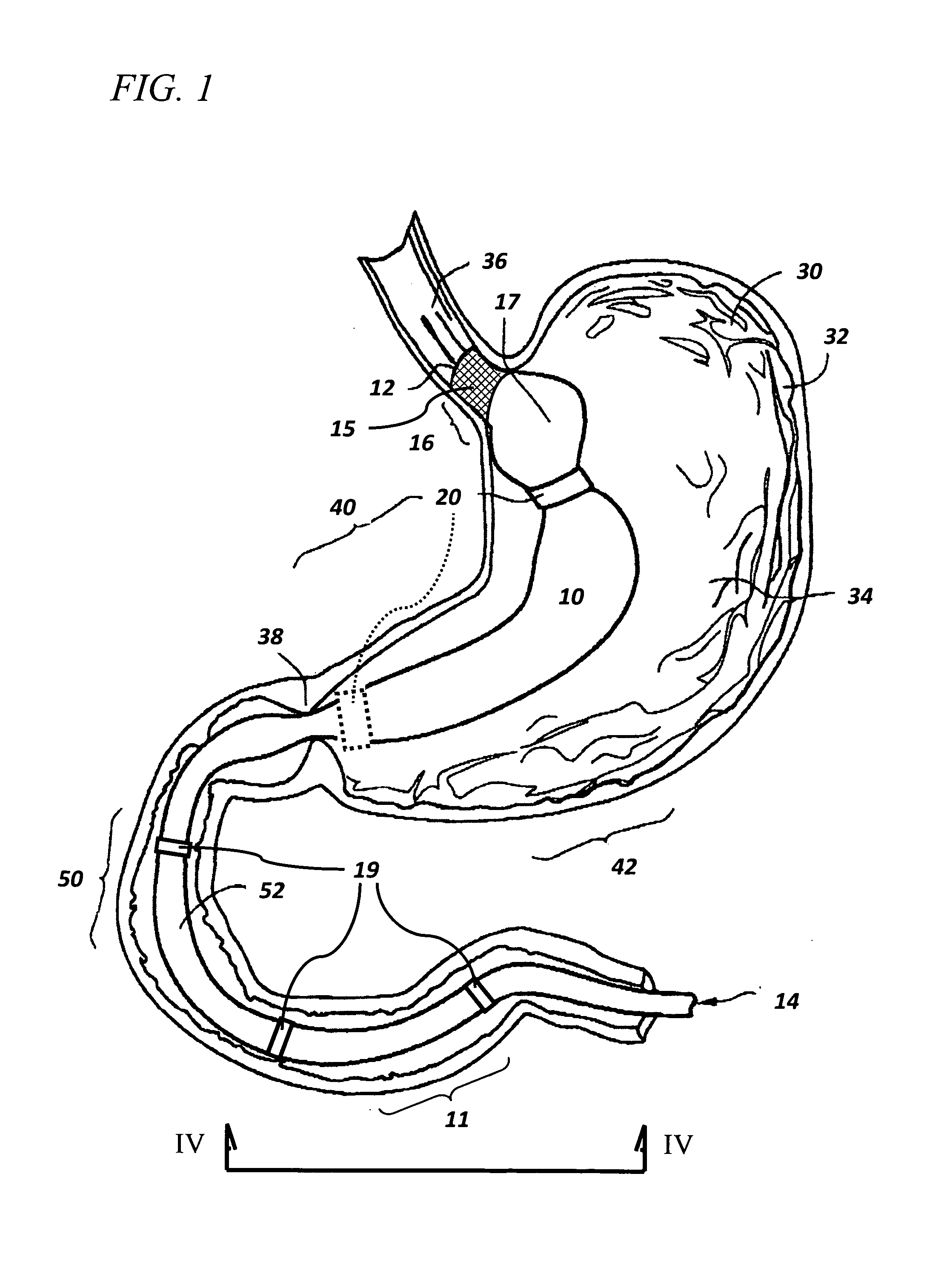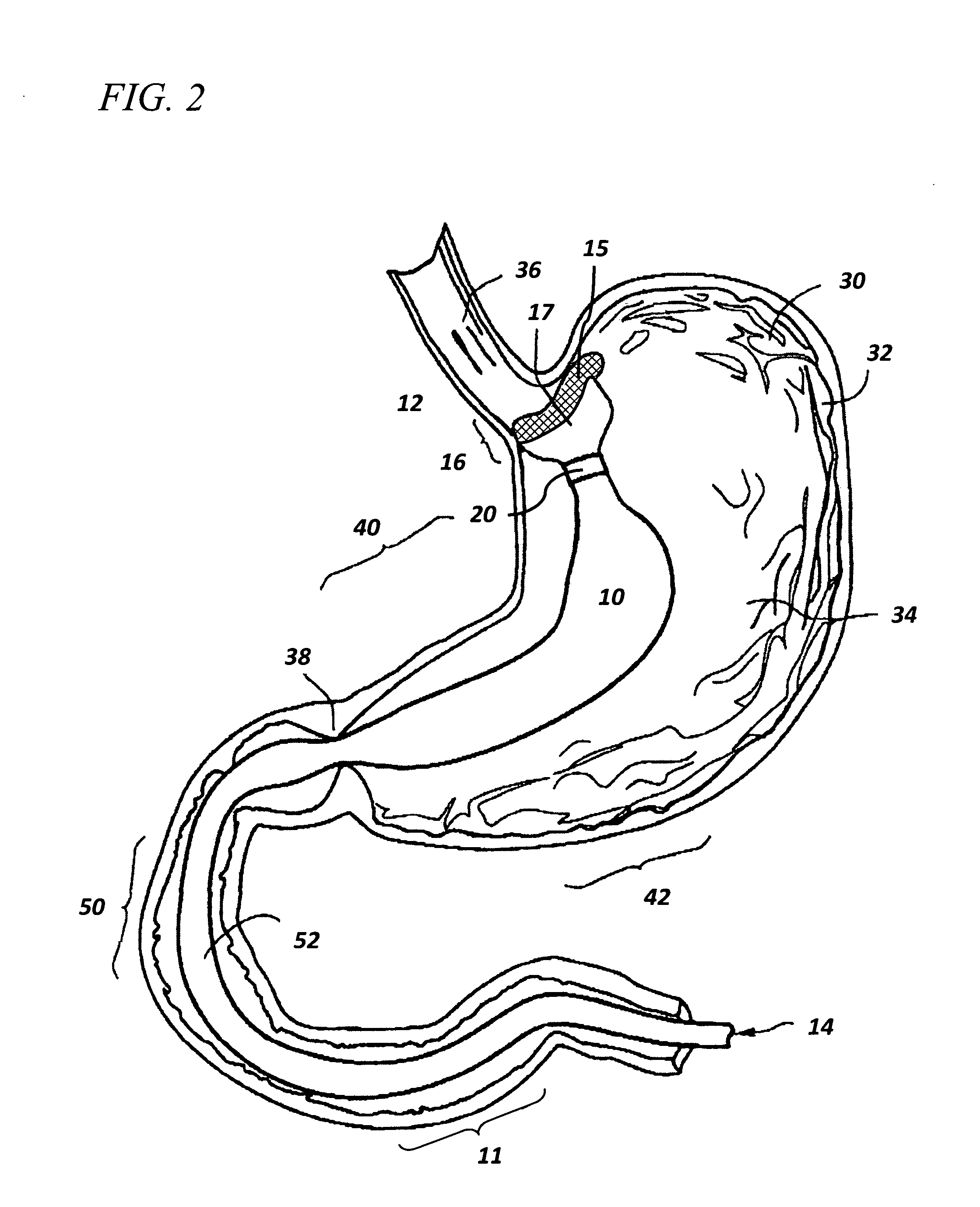Devices and methods for endolumenal therapy
a technology of endolumenal therapy and devices, applied in the field of mammalian body disorders, can solve the problems of dumping syndrome, patient experiencing painful cramping and diarrhea, and most gastric bypass patients losing significant weight, and achieve the effect of promoting tissue in-growth
- Summary
- Abstract
- Description
- Claims
- Application Information
AI Technical Summary
Benefits of technology
Problems solved by technology
Method used
Image
Examples
Embodiment Construction
[0033]Referring to FIG. 1, there is specifically depicted an endolumenal sleeve 10. Endolumenal sleeve 10 is comprised of primary components: proximal anchor element 15, pouch 17, elongate lumen 52 and distal orifice 14. Proximal anchor element 15 (alternatively referred to as a “proximal anchor point”) includes a proximal opening 12 that is in fluid communication with elongate lumen 52 and acts to form an essentially continuous pathway from proximal opening 12 to distal orifice 14. Optionally, along the length of elongate lumen 52, plural attachments points 19 may be included to further enhance the resistance of elongate lumen 52 to problematic displacement, inversion, eversion and folding caused by peristaltic movement by the gastrointestinal tract. Alternatively, instead of plural attachment points 19, bulbous elements (such as resilient rings, inflatable bladders, foam rings, spring elements and the like) may be incorporated at one or more points along elongate tube 52, particul...
PUM
 Login to View More
Login to View More Abstract
Description
Claims
Application Information
 Login to View More
Login to View More - R&D
- Intellectual Property
- Life Sciences
- Materials
- Tech Scout
- Unparalleled Data Quality
- Higher Quality Content
- 60% Fewer Hallucinations
Browse by: Latest US Patents, China's latest patents, Technical Efficacy Thesaurus, Application Domain, Technology Topic, Popular Technical Reports.
© 2025 PatSnap. All rights reserved.Legal|Privacy policy|Modern Slavery Act Transparency Statement|Sitemap|About US| Contact US: help@patsnap.com



